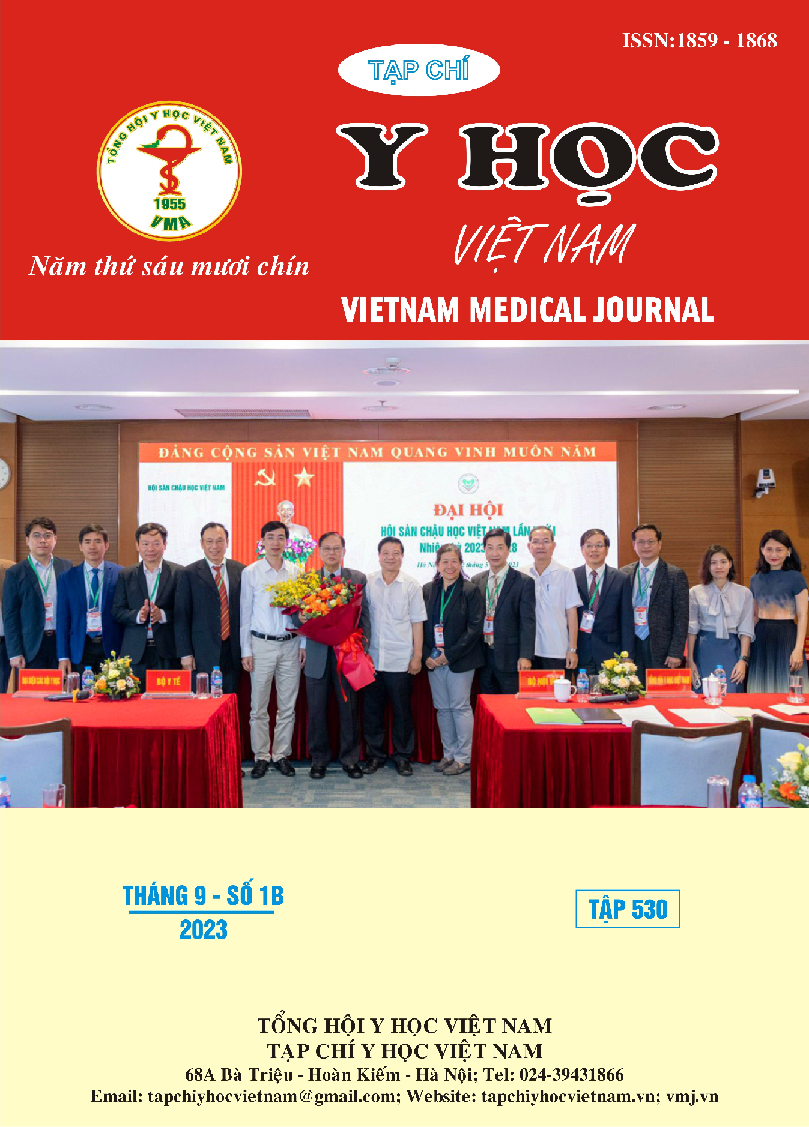RESEARCH ON BLOOD ACID URIC-LOWERING EFFECTS ON WHITE MOUSES OF ROSMARINIC ACID STANDARDIZED EXTRACT IN FOLIUM PERILLAE FRUTESCENSIS (FOLIUM PERILLAE FRUTESCENSIS)
Main Article Content
Abstract
Folium Perillae frutescensis is a medicinal herb that is used to treat some pathologies such as acid uric-lowering [4], anti-inflammatory, anti-allergic, anti-inflammatory, antioxidant, anti-cancer, anti-bacterial, anti-depressant [1]. The bioactive components of P. frutescens exhibit various enzyme-inhibiting properties, including anti-hyaluronidase and aldose reductase inhibition, α-glucosidase inhibition, xanthine oxidase inhibitory and inhibitory properties Tyrosinase [6]. However, the standardization and control of bio-compounds related to the effect of lowering blood uric acid in this medicine have not been studied. The current study aimed to evaluating the effect of lowering plasma uric acid of rosmarinic acid standardized extract from perilla leaves on white rats. The rosmarinic acid standardized extract from perilla leaves with the fundermental standard was conducted based on "Guidelines for pre-clinical and clinical trials of traditional medicines, medicines from medicinal herbs, No. 141/QD-K2D dated October 27, 2015 of the Ministry of Health of the Russian Federation". The result shoewed that Folium Perillae frutescensis extracts at doses of 0.5 g/kg and 1 g/kg both lowered plasma uric acid with statistical significance compared to theset of pathological symptoms, respectively, 14.40% and 37,36% (p≤0,001) on the rat model of increasing uric acid by potassium oxonate in acute preventive regimens. In conclusion: Folium Perillae frutescensis extract/paste at doses of 0.5 g/kg and 1 g/kg both lowered plasma uric acid, but a dose of 1 g/kg better lowered uric acid than a dose of 0,5 g/kg on the rat model increasing uric acid by potassium oxonate in acute preventive regimens.
Article Details
Keywords
Standardized extract/paste, Folium Perillae frutescensis, ower blood uric acid
References
2. Yonger Chen, Cantao Li, Shuni Duan, Xin Yuan, Jian Liang, Shaozhen %J Biomedicine Hou and Pharmacotherapy (2019), "Curcumin attenuates potassium oxonate-induced hyperuricemia and kidney inflammation in mice", 118(109195).
3. Li-Na Huo, Wei Wang, Chun-Yu Zhang, Hai-Bo Shi, Yang Liu, Xiao-Hong Liu, Bing-Hua Guo, Dong-Mei Zhao and Hua %J Molecules Gao (2015), "Bioassay-guided isolation and identification of xanthine oxidase inhibitory constituents from the leaves of Perilla frutescens", 20(10), 17848-17859.
4. Liu, Y., Hou, Y., Si, Y., Wang, W., Zhang, S., Sun, S., ... & Wang, W. (2020), "Isolation, characterization, and xanthine oxidase inhibitory activities of flavonoids from the leaves of Perilla frutescens", Natural product research, 34(18), 2566-2572.
5. Tianqiao Yong, Minglong Zhang, Diling Chen, Ou Shuai, Shaodan Chen, Jiyan Su, Chunwei Jiao, Delong Feng and Yizhen %J Journal of ethnopharmacology Xie (2016), "Actions of water extract from Cordyceps militaris in hyperuricemic mice induced by potassium oxonate combined with hypoxanthine", 194(403-411).
6. Hou, T., Netala, V. R., Zhang, H., Xing, Y., Li, H., & Zhang, Z. (2022). Perilla frutescens: A rich source of pharmacological active compounds. Molecules, 27(11), 3578.


